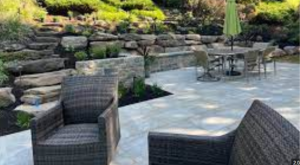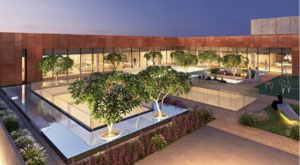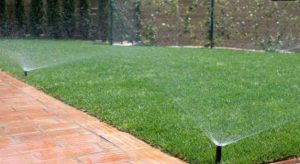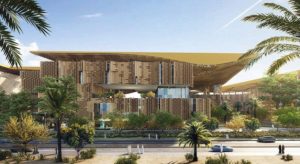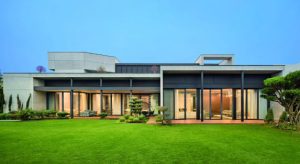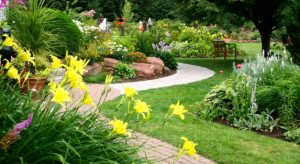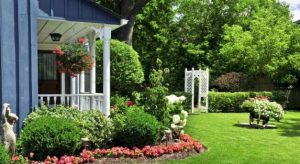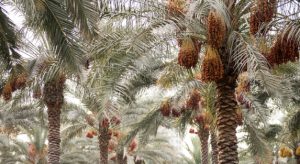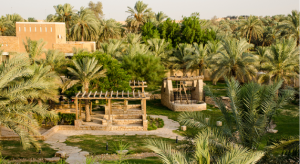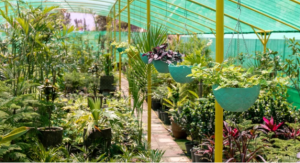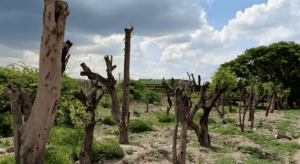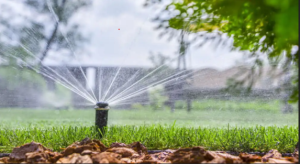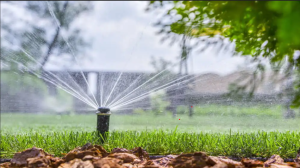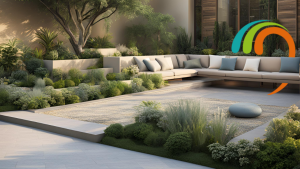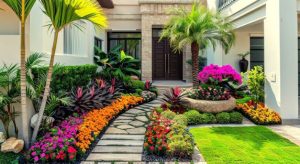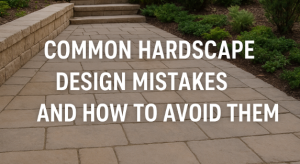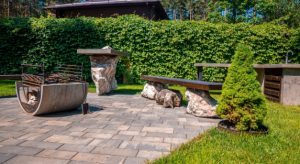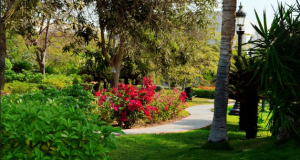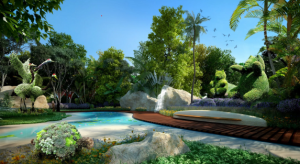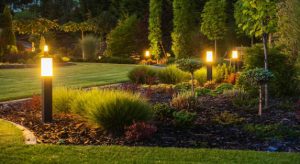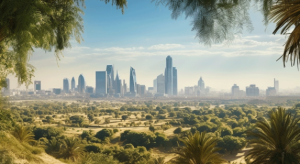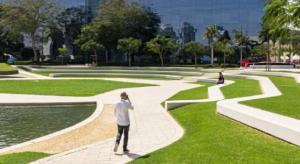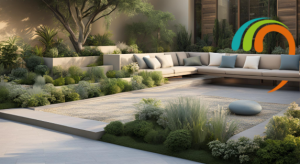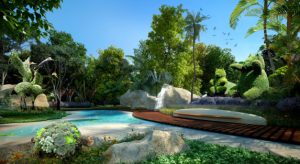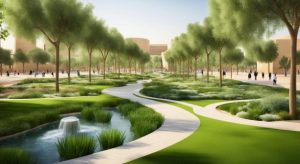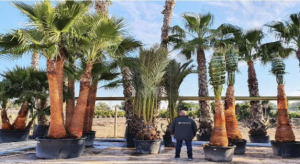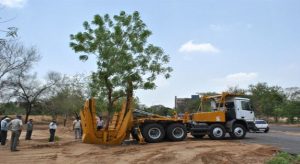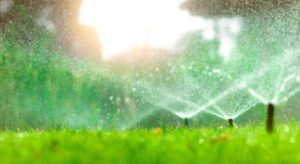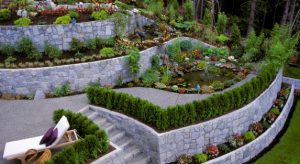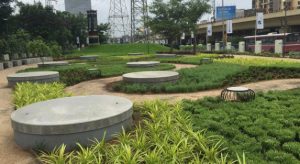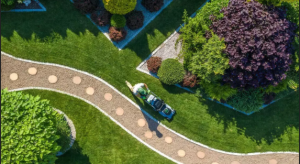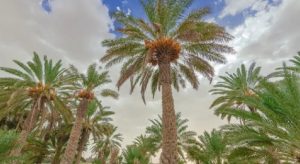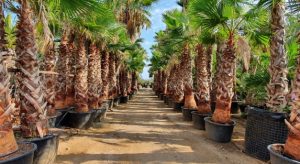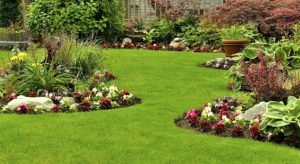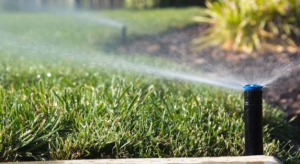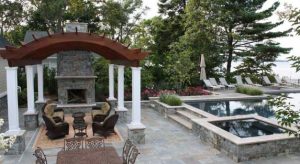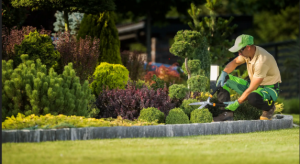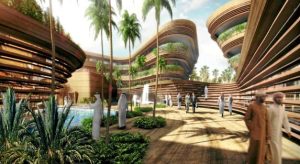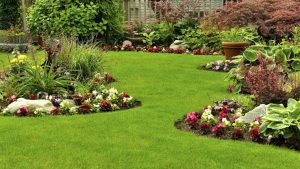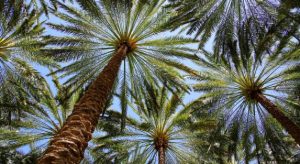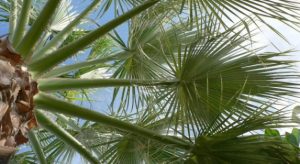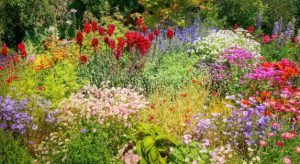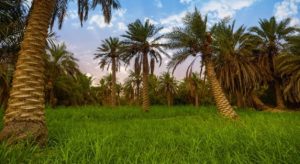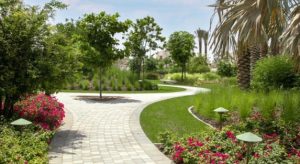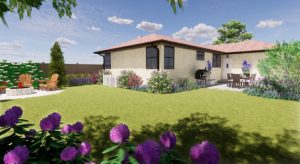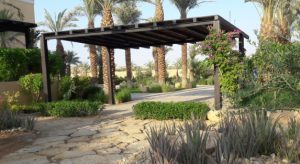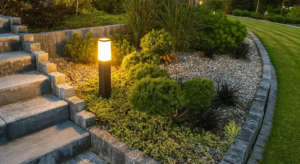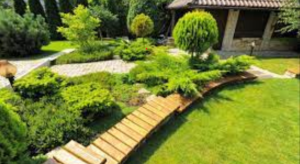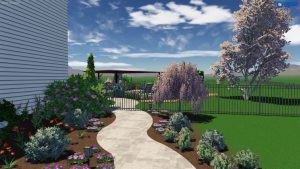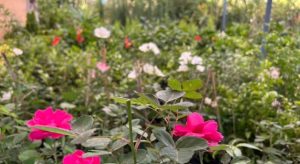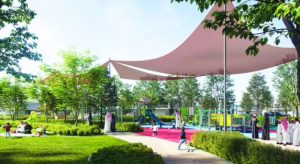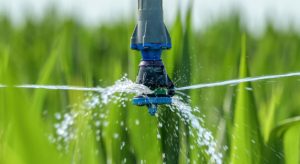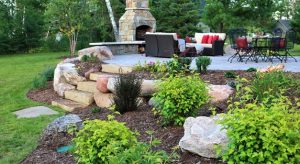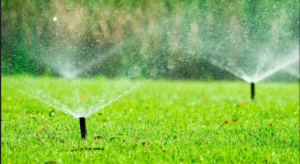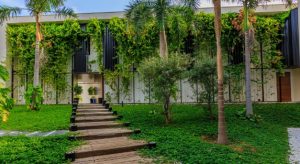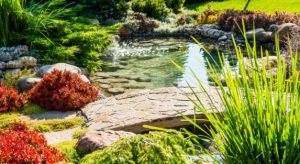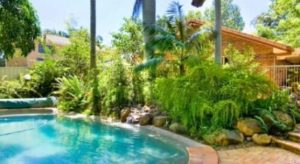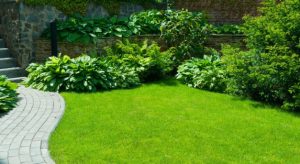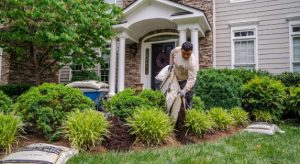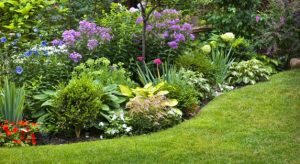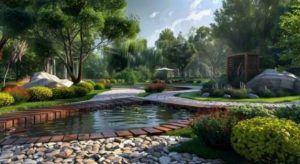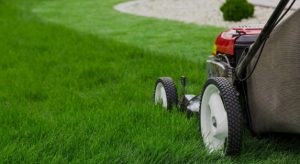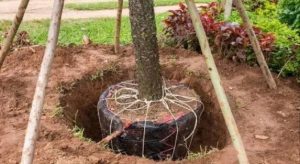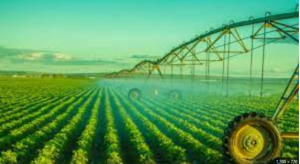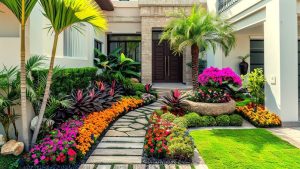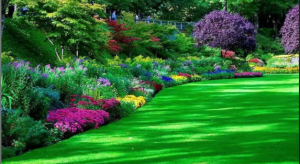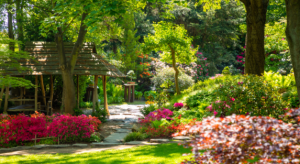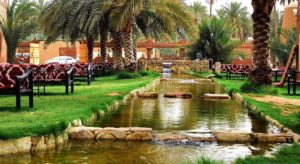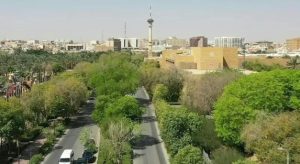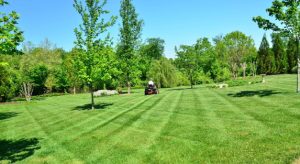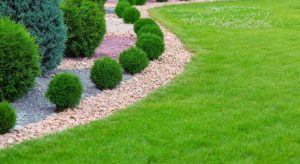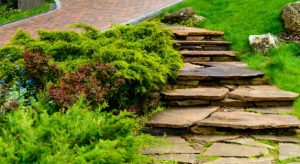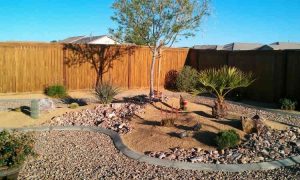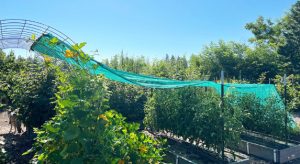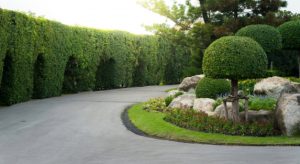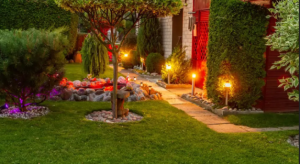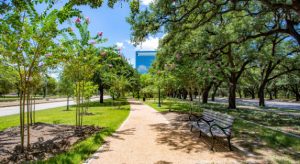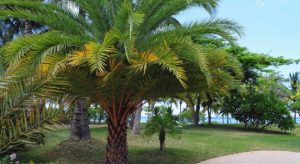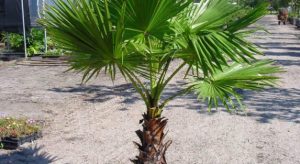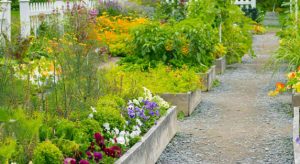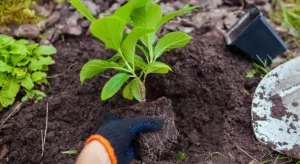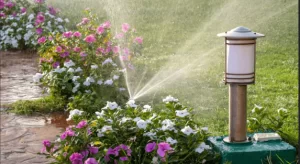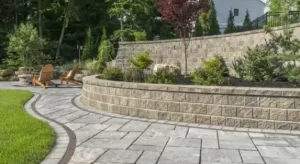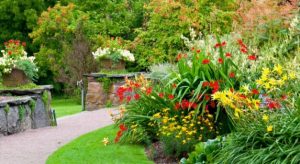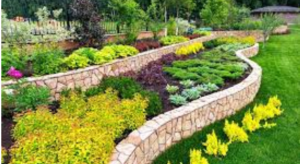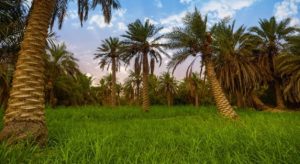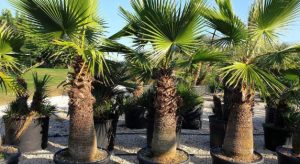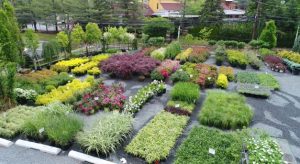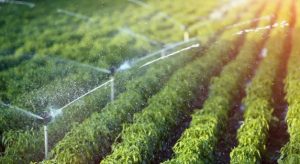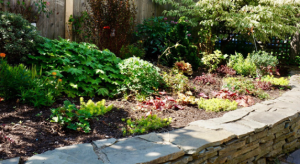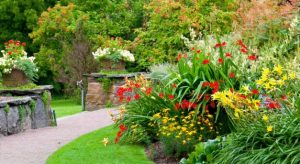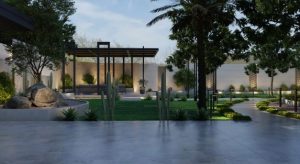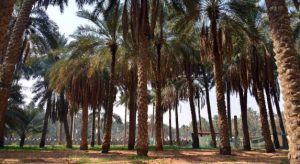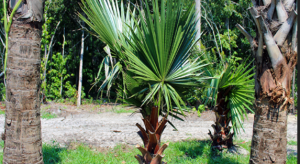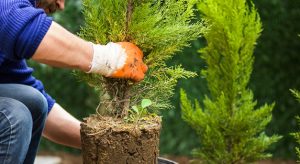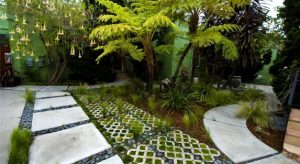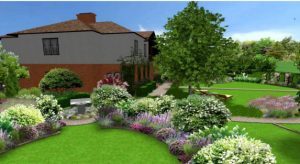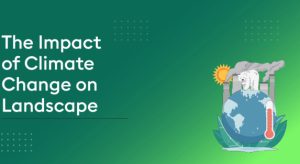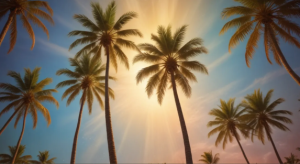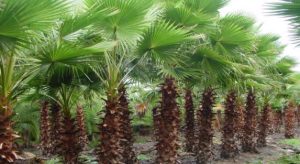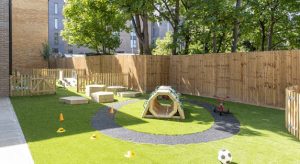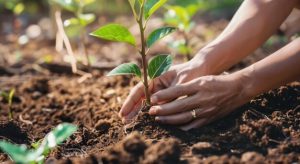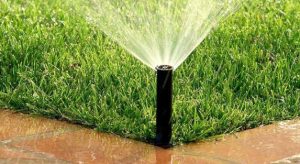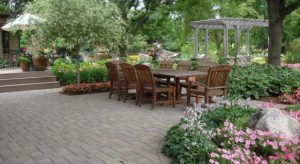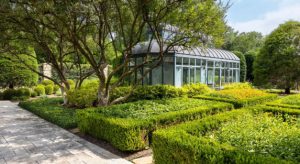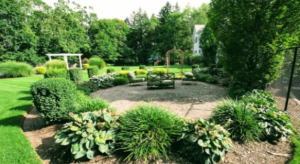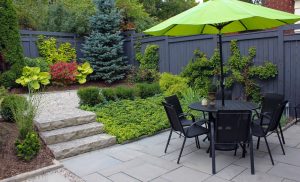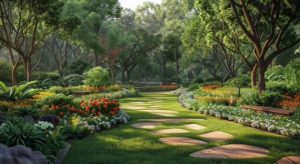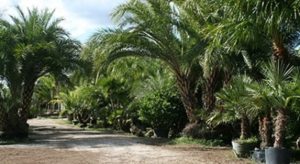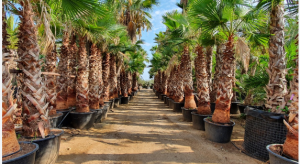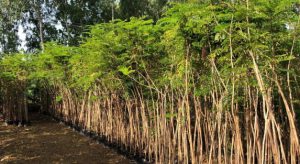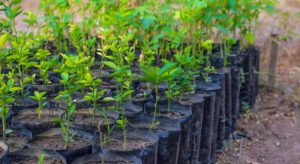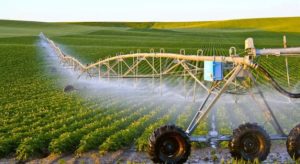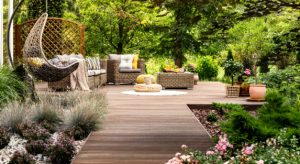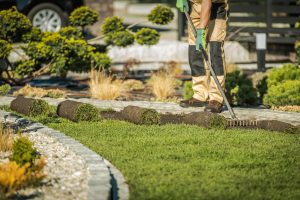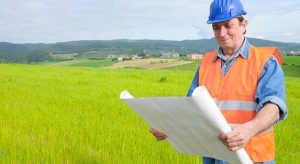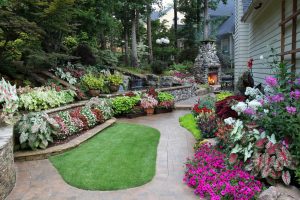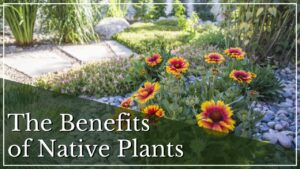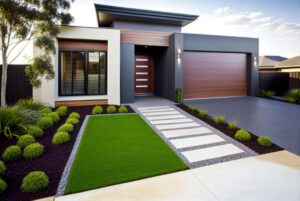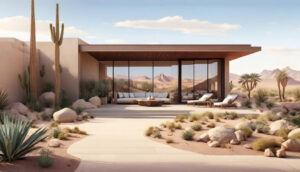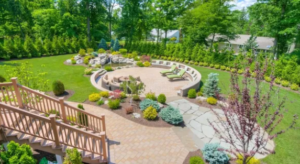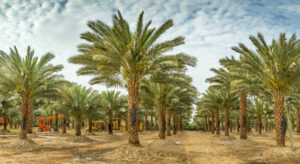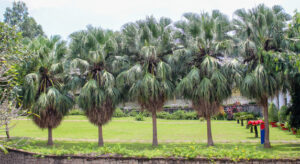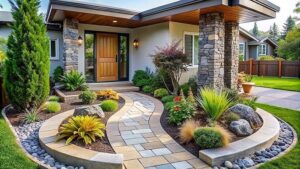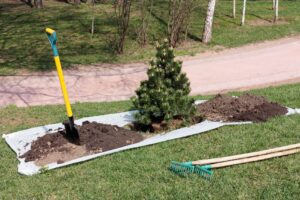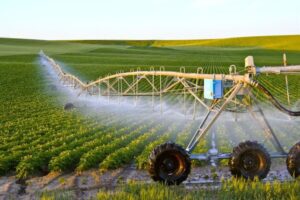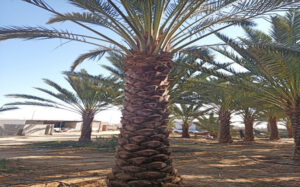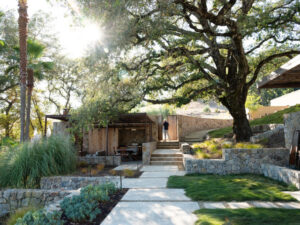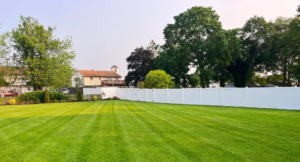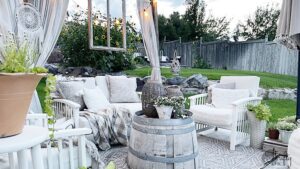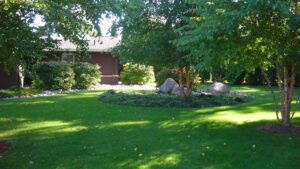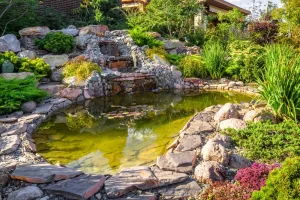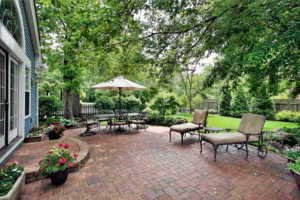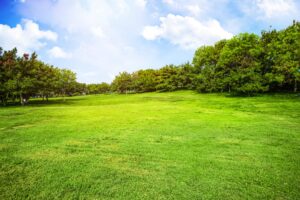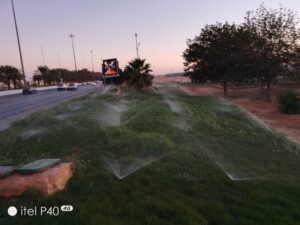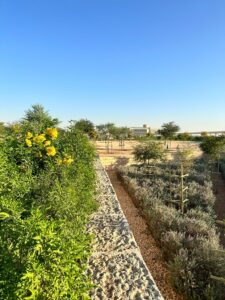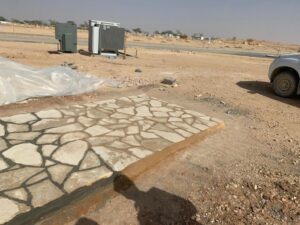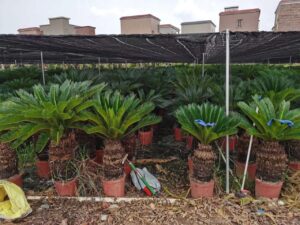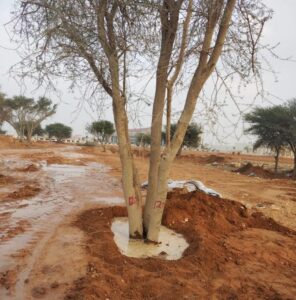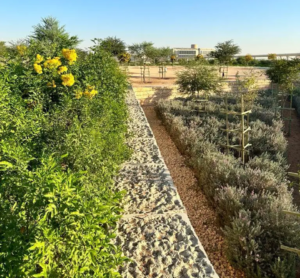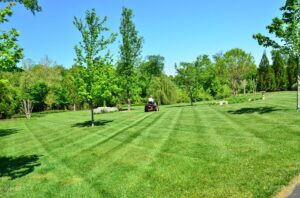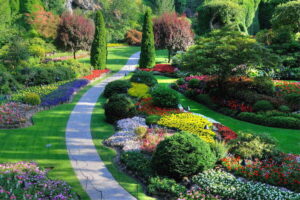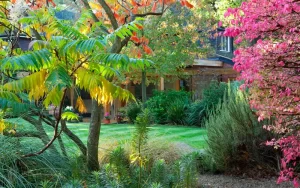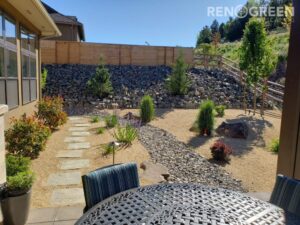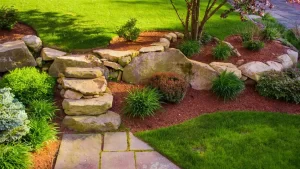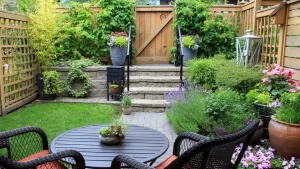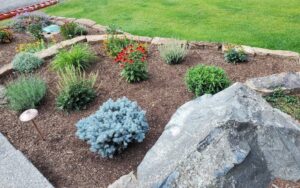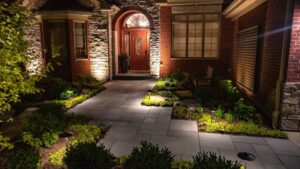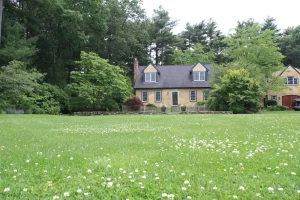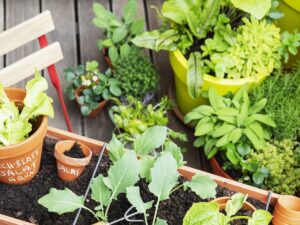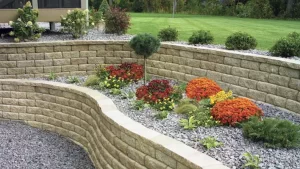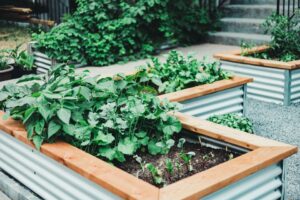How to Keep Your Softscape Green and Healthy in the Saudi Summer
12 August, 2025
1. Introduction – Why Summer Poses a Challenge for Softscape Landscaping in Saudi Arabia
When it comes to creating a lush, vibrant outdoor space in the Middle East, nothing quite compares to the beauty and tranquillity of a well-designed softscape. From manicured lawns to colorful flower beds, and from leafy shrubs to stately palm trees, softscape elements bring life to any property. However, maintaining that freshness becomes a real test during the Saudi summer, when temperatures can soar above 45°C, humidity drops, and the sun’s intensity is relentless.
For homeowners and businesses investing in softscape landscaping installation Saudi Arabia, the summer season is both a test of planning and a measure of maintenance skill. Without the right care, plants can wither, lawns can brown, and all that investment in soil preparation, plant selection, and irrigation systems can go to waste.
The challenge lies not only in the heat but also in water scarcity. Saudi Arabia’s desert climate means natural rainfall is rare, and conserving water is an environmental necessity. That’s why a combination of smart plant choices, advanced irrigation methods, and protective landscaping techniques is essential for keeping your greenery healthy even in the peak of summer.
This guide will walk you through everything you need to know — from preparing your soil to choosing heat-tolerant plants, from setting up water-efficient irrigation systems to tackling summer pests. Whether you’re a villa owner in Riyadh, managing a luxury resort in Jeddah, or overseeing a commercial landscape in Dammam, the principles remain the same.
By the end, you’ll have a clear action plan to ensure your softscape landscaping doesn’t just survive but thrives in Saudi Arabia’s harsh summer conditions. After all, with the right strategy, you can turn the summer heat from a threat into just another season for your garden to shine.
2. Understanding the Saudi Climate and Its Impact on Softscape
Saudi Arabia’s climate is characterized by extreme heat, low humidity, and minimal rainfall, especially during summer. In many regions, daytime temperatures exceed 45°C, and the soil can dry out rapidly, placing enormous stress on plants. This intense environment requires softscape landscaping designs that prioritize heat tolerance, water conservation, and sustainable growth.
For those investing in softscape landscaping installation Saudi Arabia, the first step is understanding these conditions and designing accordingly. Plants that thrive in cooler, wetter climates may not survive without excessive water usage, which is neither cost-effective nor environmentally responsible. Instead, landscaping professionals recommend native species and drought-tolerant imports that have adapted to desert conditions.
Another challenge is soil quality. In many parts of the Kingdom, the soil is sandy, meaning it drains water quickly and lacks essential nutrients. This directly impacts root health and overall plant growth. Without proper soil preparation, even hardy plants can suffer in summer.
The wind is another factor. Hot, dry winds can strip plants of moisture and damage delicate leaves. This is why incorporating windbreaks — such as hedges, tall shrubs, or strategic hardscape elements — is essential in softscape planning.
Lastly, the summer sun can cause soil temperature to rise to levels that damage root systems. Mulching, shading, and ground cover are key strategies to combat this. The takeaway is simple: the more you understand your local climate and its challenges, the better equipped you’ll be to design and maintain a thriving softscape throughout the harshest months of the year.
3. Choosing the Right Plants for Hot and Arid Conditions
A successful softscape landscaping installation in Saudi Arabia begins with plant selection. Choosing species adapted to the Kingdom’s arid climate ensures less water dependency, minimal maintenance, and long-term sustainability. The goal is to blend aesthetics with practicality.
Native plants are always the best choice. For example, date palms (Phoenix dactylifera) not only withstand extreme heat but also add a classic Arabian charm to outdoor spaces. Other popular native choices include Arabian jasmine, oleander, desert rose, and bougainvillea, all of which can handle high temperatures and occasional neglect.
If you’re looking for ground cover, opt for drought-resistant grasses such as Bermuda grass or Zoysia grass, which remain green even with reduced watering. For flowering plants, lantana, hibiscus, and plumeria offer vibrant color without demanding too much care.
It’s also wise to consider plant placement during the installation phase. Place more delicate plants in shaded areas, while heat-tolerant ones can take the sunniest spots. Using companion planting — grouping plants with similar water and sunlight needs — reduces maintenance work and helps optimize irrigation.
Moreover, incorporating shrubs like henna or artemisia can add greenery while also acting as windbreaks. The right mix of trees, shrubs, flowers, and grass creates visual balance and helps maintain a cooler microclimate in your garden.
Remember: in the Saudi summer, survival is just as important as beauty. Choosing plants that thrive in this climate ensures your landscape investment stays lush and appealing all year round.
4. Soil Preparation for Maximum Moisture Retention
In softscape landscaping, soil is the foundation of plant health — and in Saudi Arabia’s desert climate, it’s often the weakest link. Most local soils are sandy, meaning they drain water quickly and have low nutrient content. Without intervention, plants struggle to establish strong roots.
Before any softscape landscaping installation Saudi Arabia, soil testing should be the first step. This identifies nutrient deficiencies and helps determine the best soil amendments. Adding organic matter such as compost or peat moss can drastically improve water retention and nutrient levels. For areas with extremely sandy soil, incorporating clay or loam mixes can enhance moisture-holding capacity.
Another essential practice is creating raised beds or berms. These structures help direct water flow, reducing runoff and ensuring plants receive the moisture they need. In larger landscapes, applying a layer of mulch on top of the soil slows evaporation, keeps roots cool, and suppresses weed growth.
Deep tilling before planting also improves aeration and allows amendments to integrate more effectively. In some cases, soil conditioners like gypsum can be used to improve structure and drainage balance.
Finally, consider drip irrigation paired with moisture-retaining soil amendments. This combination ensures that every drop of water counts, even under the blazing summer sun. Healthy, well-prepared soil is the best insurance policy for keeping your softscape green when temperatures soar.
5. Efficient Irrigation Systems and Watering Techniques
In Saudi Arabia’s scorching summer, water is the lifeline of every softscape. However, excessive or poorly managed watering can waste resources without improving plant health. The solution lies in smart irrigation design. For anyone investing in softscape landscaping installation Saudi Arabia, installing a water-efficient irrigation system is essential.
Drip irrigation is the gold standard. It delivers water directly to the root zone, minimizing evaporation and runoff. This system can be automated with timers and moisture sensors, ensuring plants receive water only when needed. For lawns, subsurface irrigation systems are a better choice than sprinklers, as they reduce evaporation and prevent fungal growth from excess surface moisture.
Watering during early mornings or late evenings is also crucial. In midday heat, much of the water evaporates before reaching the roots. Deep, infrequent watering encourages stronger root development compared to shallow, frequent watering, which keeps roots near the surface and makes plants more vulnerable to heat stress.
Grouping plants with similar water needs — a principle known as hydro-zoning — ensures no area is over- or under-watered. In large gardens, dividing the irrigation system into zones allows better control.
Lastly, consider integrating treated greywater recycling systems, which reuse household wastewater for irrigation. With Saudi Arabia’s limited freshwater resources, this is both environmentally responsible and cost-effective. A well-planned irrigation strategy not only keeps your softscape lush but also respects the Kingdom’s water conservation goals.
6. Mulching: Your Secret Weapon Against Heat
Mulching is a simple yet powerful technique to protect plants in Saudi summers. It involves covering the soil surface with organic or inorganic materials to conserve moisture, regulate temperature, and suppress weeds. For softscape landscaping installation Saudi Arabia, mulching is an absolute must for summer survival.
Organic mulches — such as shredded bark, wood chips, coconut husk, or date palm fronds — decompose over time, enriching the soil with nutrients. Inorganic mulches like gravel or decorative pebbles reflect sunlight, keeping roots cooler while adding an aesthetic appeal to the landscape.
A layer of 5–8 cm of mulch around plants reduces evaporation by up to 70%. It also insulates the soil, preventing roots from overheating during midday sun. Mulch also minimizes weed competition for water and nutrients, which is particularly important in the nutrient-poor soils found in much of Saudi Arabia.
When applying mulch, avoid piling it directly against plant stems or tree trunks, as this can trap moisture and encourage rot. Instead, leave a small gap to promote airflow. For flower beds, organic mulch is often preferred for its soil-enhancing properties, while decorative stone mulch works well in desert-themed gardens.
An added benefit? Mulching reduces the need for frequent watering, saving time, labor, and water bills. In the Saudi climate, it’s not just an option — it’s a necessity for keeping your softscape green and thriving.
7. Fertilization Strategies for Summer Growth
Plants in Saudi summers face two challenges: intense heat and nutrient-poor soils. A targeted fertilization plan can help them not only survive but also grow vigorously. When planning softscape landscaping installation Saudi Arabia, incorporating a seasonal feeding schedule is key.
Slow-release fertilizers are ideal because they provide a steady nutrient supply over time, avoiding sudden growth spurts that can stress plants in the heat. Look for balanced blends with nitrogen, phosphorus, and potassium, plus micronutrients like iron and magnesium, which are often lacking in desert soils.
For lawns, apply nitrogen-rich fertilizer at the beginning of summer to promote green growth. Flowering plants benefit from phosphorus, which supports bud development, while potassium helps strengthen cell walls, making plants more heat-tolerant.
Organic options such as compost, seaweed extract, and manure tea improve soil structure while feeding plants naturally. Applying fertilizers early in the morning or late evening prevents nutrient loss through evaporation and reduces plant stress.
Avoid over-fertilizing during peak heat, as this can burn roots and increase water demand. Instead, feed in smaller doses more frequently. Pair fertilization with proper watering so nutrients reach the root zone effectively.
With a balanced feeding program, your plants will maintain their lush appearance even under the punishing Saudi sun — proving that strategic nutrition is just as important as irrigation.
8. Shade Solutions for Delicate Plants
Not all plants in your softscape are equally heat-tolerant. Delicate species need extra protection to survive the Saudi summer. In softscape landscaping installation Saudi Arabia, shade solutions are an integral design element for both aesthetics and plant health.
Temporary shade cloths are cost-effective and easy to install. Available in different densities, they filter sunlight while allowing airflow. For smaller gardens, pergolas and trellises with climbing plants like bougainvillea provide natural shade that cools the surrounding area.
Planting taller trees strategically can create dappled shade for more sensitive shrubs and flowers. Palms, for instance, cast a gentle shade without completely blocking the light. In commercial landscapes, architectural shade structures can double as visual focal points while protecting plants from scorching rays.
Potted plants can be moved to shaded areas during peak heat hours. For flower beds, interplanting with fast-growing summer annuals can provide a living canopy.
Remember: shade doesn’t just protect leaves — it also lowers soil temperature, slowing evaporation and reducing water needs. With the right shade strategy, even the most delicate blooms can thrive in Saudi Arabia’s challenging summer climate.
9. Pest and Disease Management in the Heat
Summer heat can trigger pest outbreaks and plant diseases, especially when plants are stressed from high temperatures. In softscape landscaping installation Saudi Arabia, proactive pest control is essential for maintaining healthy greenery.
Common summer pests include spider mites, whiteflies, aphids, and mealybugs, which thrive in hot, dry conditions. Regular inspection helps detect infestations early. A simple magnifying glass can reveal hidden pests before they cause visible damage.
Biological control — introducing beneficial insects like ladybugs and lacewings — can naturally keep pest populations in check. Neem oil and insecticidal soap are safe, eco-friendly solutions for treating outbreaks without harming beneficial organisms.
Fungal diseases like powdery mildew and root rot can occur in over-watered areas. Good air circulation, proper watering schedules, and avoiding leaf wetting help prevent such problems. Mulching also helps by reducing soil splash that spreads pathogens.
Keeping plants healthy through proper irrigation, fertilization, and pruning reduces their vulnerability to pests. Prevention is always more effective — and less costly — than treatment.
10. Seasonal Maintenance Tips for Healthy Softscape
A lush summer garden in Saudi Arabia doesn’t happen by accident — it requires consistent maintenance. For softscape landscaping installation Saudi Arabia, seasonal upkeep ensures that all your efforts in design and planting pay off.
Start with regular pruning to remove dead or heat-damaged foliage. This prevents disease spread and encourages healthy growth. Deadheading spent flowers keeps plants looking fresh and promotes new blooms.
Inspect irrigation systems weekly for leaks or clogs. In hot weather, even a short disruption can harm plants. Clean filters and adjust watering schedules based on current temperatures.
Weed control is crucial, as weeds compete for water and nutrients. Mulching, as discussed earlier, greatly reduces weed growth.
For lawns, mowing height should be slightly higher in summer to shade the soil and retain moisture. Apply a mid-season fertilizer boost and monitor for signs of pest activity.
Document changes in plant health throughout the summer. Keeping a seasonal journal helps you refine your maintenance plan for future years. Consistent care transforms a vulnerable summer softscape into a thriving, resilient landscape.
11. Balancing Hardscape and Softscape for Cooling Effect
A well-designed landscape isn’t just about plants — it’s about creating harmony between softscape and hardscape elements. In Saudi Arabia’s hot climate, this balance can significantly improve temperature control and water efficiency. When planning softscape landscaping installation Saudi Arabia, integrating cooling hardscape features is both functional and beautiful.
Hardscape elements such as pergolas, gazebos, stone pathways, and water features can provide much-needed shade and lower ambient temperatures around delicate plants. Light-colored paving materials reflect sunlight, keeping surrounding areas cooler, while permeable pavers allow rainwater to seep into the soil rather than run off.
Positioning seating areas or shaded walkways near dense plantings creates microclimates where both people and plants benefit from reduced heat exposure. Water features — from fountains to small ponds — can introduce evaporative cooling, lowering the local temperature while adding a serene visual element.
The key is to ensure hardscape structures don’t block essential airflow or overshadow sun-loving plants. By thoughtfully blending hardscape and softscape, you not only enhance comfort and beauty but also reduce the overall environmental stress on your garden. This design synergy is what transforms a landscape into a sustainable summer oasis.
12. Eco-Friendly Landscaping Practices for Sustainability
In a country where water conservation is vital, adopting eco-friendly landscaping practices isn’t just a trend — it’s a necessity. For softscape landscaping installation Saudi Arabia, sustainable methods protect resources while maintaining lush greenery.
Xeriscaping — designing landscapes to minimize water use — is a key principle. This involves choosing drought-tolerant plants, reducing turf areas, and grouping plants with similar needs. Drip irrigation and greywater recycling further reduce water waste.
Using organic fertilizers and pest control methods protects the soil and avoids chemical runoff. Composting green waste from pruning and mowing not only enriches the soil but also reduces landfill contributions.
Another sustainable approach is integrating native plants, which require less water and are naturally resistant to local pests and diseases. Minimizing synthetic materials in landscaping construction — opting for natural stone, reclaimed wood, and eco-friendly lighting — also reduces the environmental footprint.
These practices align with Saudi Arabia’s Vision 2030 goals for sustainability, making them appealing for both private homeowners and corporate landscapes. A green garden is beautiful, but a sustainable green garden is future-proof.
13. Common Mistakes to Avoid During Summer Care
Even with the best intentions, certain missteps can undo months of effort in keeping a softscape green during Saudi summers. Recognizing and avoiding these mistakes is crucial for softscape landscaping installation Saudi Arabia success.
One common error is overwatering. While plants need hydration in heat, too much water can suffocate roots, encourage fungal growth, and waste resources. Another is watering during midday, when evaporation rates are highest.
Choosing non-native plants that can’t tolerate heat is another pitfall. These plants demand excessive water and care, often failing despite your efforts. Skipping mulch application or using the wrong type (like fine bark in windy areas) can also harm plants.
Neglecting to adjust irrigation schedules as weather changes leads to inconsistent moisture levels. Similarly, failing to prune dead growth promptly can attract pests and diseases.
Lastly, ignoring soil health — focusing only on watering and sunlight — weakens plants over time. Healthy soil is just as vital as any other factor in summer survival. By learning from these mistakes, you can make your maintenance routine more efficient and your results more rewarding.
14. Professional Help: Why Hiring Experts in Softscape Landscaping Installation Saudi Arabia Matters
While DIY landscaping can be rewarding, Saudi summers often demand expert knowledge to keep greenery thriving. Professional landscaping companies bring experience, specialized tools, and climate-specific expertise to your project.
Professionals can recommend the best plants for your soil and microclimate, design efficient irrigation systems, and implement shade and mulching strategies effectively. They can also identify early signs of pest infestations or nutrient deficiencies that an untrained eye might miss.
Moreover, a professional can ensure compliance with local regulations, particularly regarding water usage and sustainable landscaping practices. For commercial properties, expert care ensures consistent presentation, which can enhance brand image.
Hiring an expert doesn’t mean losing control over your garden’s design — it means having a skilled partner to bring your vision to life while ensuring it remains vibrant even in extreme conditions. For many property owners, this investment pays for itself in saved time, reduced maintenance costs, and a more beautiful, resilient landscape.
15. Case Studies: Successful Softscape Projects in Saudi Summers
Real-world examples can inspire confidence in what’s possible with softscape landscaping installation Saudi Arabia.
One residential villa in Riyadh transformed its barren yard into a lush retreat by using native palms, drought-tolerant shrubs, and a greywater irrigation system. Mulching and strategic shading allowed the plants to flourish despite peak summer heat.
A luxury hotel in Jeddah created a tropical-style poolside garden using heat-tolerant hibiscus, bougainvillea, and plumeria. Drip irrigation kept the plants hydrated while minimizing water waste. The addition of pergolas and reflective paving kept the space comfortable for guests.
In Dammam, a corporate office complex replaced water-heavy turf with a mix of native grasses and groundcovers. This reduced water usage by 50% while maintaining year-round greenery.
These case studies prove that with the right plant choices, soil preparation, and irrigation strategy, softscapes can thrive in the harshest Saudi conditions.
16. Cost Considerations for Summer-Friendly Softscaping
Budgeting for softscape landscaping installation Saudi Arabia involves more than plant and soil costs. A summer-friendly design may require investments in irrigation systems, shade structures, mulching materials, and soil amendments.
Initial installation costs can be higher if you choose drought-tolerant plants, but the long-term savings on water and maintenance often outweigh the upfront expense. Automated irrigation systems and mulching reduce labor costs over time.
You should also budget for seasonal maintenance, including fertilization, pruning, and pest management. Commercial properties may require year-round professional care, which adds to ongoing expenses but ensures consistent results.
By considering the full life-cycle cost of your landscape, you can make informed choices that balance beauty, durability, and budget.
17. Long-Term Planning for Year-Round Greenery
Summer survival is important, but a truly resilient softscape thrives all year. In softscape landscaping installation Saudi Arabia, long-term planning means selecting plants with seasonal interest, designing adaptable irrigation, and scheduling regular maintenance.
Planting a mix of species that peak in different seasons ensures your garden always has visual appeal. Adjusting irrigation and fertilization schedules with the seasons prevents overuse of resources.
Investing in soil health with annual composting and mulching creates a strong foundation for future growth. Regular assessments help you adapt to climate changes and evolving water regulations.
A landscape designed with year-round health in mind isn’t just easier to maintain — it’s also more enjoyable for homeowners and visitors alike.
18. Latest Trends in Saudi Arabia Softscape Landscaping
Landscaping in Saudi Arabia is evolving, with new trends focusing on sustainability, technology, and cultural aesthetics. For softscape landscaping installation Saudi Arabia, trends include:
- Smart Irrigation Systems – Using AI and sensors to optimize water use.
- Native Plant Revival – Emphasizing traditional Saudi flora for sustainability.
- Edible Landscaping – Integrating herbs, fruit trees, and vegetables into decorative designs.
- Desert-Modern Aesthetic – Combining minimalistic hardscapes with lush, strategic plantings.
- Green Walls and Vertical Gardens – Maximizing greenery in limited spaces.
These trends not only align with environmental goals but also cater to the growing desire for landscapes that reflect both modern style and local heritage.
19. Conclusion – Your Roadmap to a Thriving Summer Landscape
Keeping your softscape green and healthy through the Saudi summer is a challenge — but it’s far from impossible. By understanding the climate, choosing the right plants, preparing your soil, and adopting efficient irrigation and shading techniques, you can transform even the hottest months into a season of beauty.
Softscape landscaping installation Saudi Arabia is as much about smart planning as it is about aesthetics. Sustainability should be at the heart of your approach — from using native plants and eco-friendly materials to optimizing water use.
Whether you manage your own garden or hire professionals, the strategies in this guide will help you create a resilient landscape that not only survives the summer heat but thrives year-round. In the end, your reward is more than a beautiful outdoor space — it’s a lasting, sustainable environment that reflects the richness of Saudi Arabia’s natural and cultural heritage.
- Fountain and Waterfalls
- Gardening
- hardscape
- Irrigation system
- Landscape
- Lawn
- Nursery
- Palm Tree
- Plantation and Maintenance
- softscape
- Tree Transplanting
- Washingtonian Tree
Categories
Latest Post
- Fountain and Waterfalls
- Gardening
- hardscape
- Irrigation system
- Landscape
- Lawn
- Nursery
- Palm Tree
- Plantation and Maintenance
- softscape
- Tree Transplanting
- Washingtonian Tree





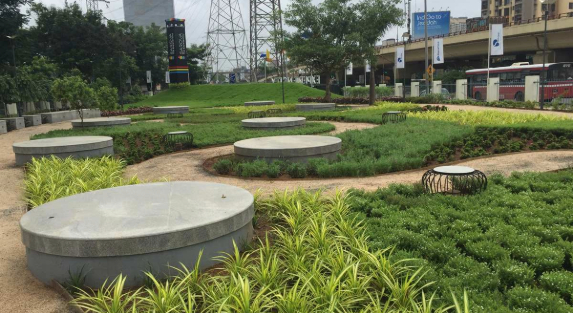
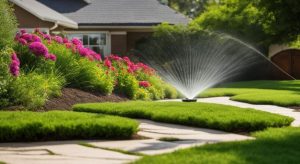
 .
.